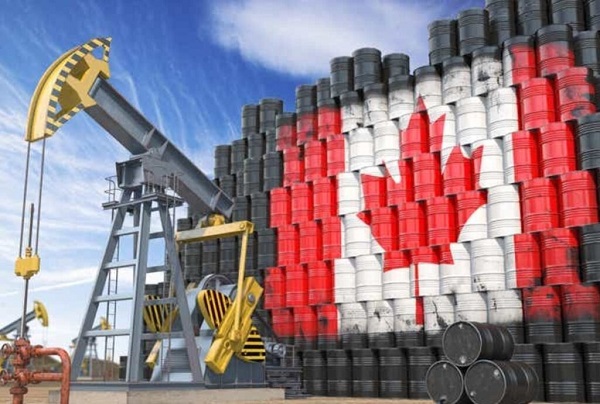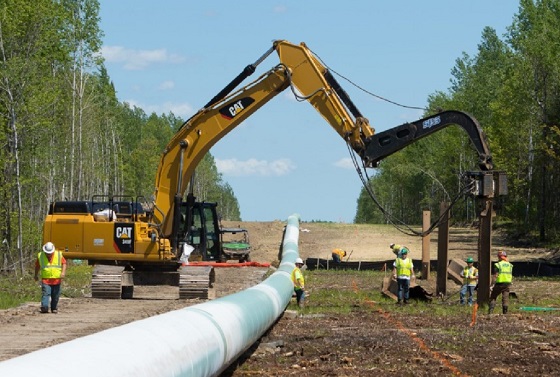Business
5 Myths About Purchasing a Vehicle

“I can get a better interest rate at my own bank”
Interest rates will depend on the way you’re borrowing the money, and for
how long. A dealership sells many auto loans each month, which pushes
lenders to be very competitive in order to earn business. We highly
recommend asking your dealership what the best rate they can offer is
before you make a purchasing decision.
“The end of the month is the best time to buy”
Dealerships always have a momentum push at month’s end in order to offer
the manufacturers current incentives before they expire. Most consumers
will shop during the month with these incentives in mind, and then make their
final decision near the end of the month. There are times some dealerships
have targets to achieve and depending on the store, and vehicle, you could
get a better deal.
“Paying Cash gets you a better deal”
This was true many years ago, but as noted in Item 1, Lenders try to entice
dealerships to use them. This often allows your dealership to offer you more
competitive pricing on a vehicle.
“A New vehicle will depreciate 50% the moment I drive away”
Manufacturers use new vehicle incentives with low interest rates for buyers.
Once a vehicle is traded in and sold as used, the consumer purchasing that
vehicle will pay interest rates anywhere from 4-7%, which can make the
payment the same and sometimes higher than it was for a new vehicle. This
is especially noticeable when a vehicle is traded in within the first year of
ownership as the trade value can be substantially less than the original
MSRP. This is because the dealership must price the used vehicle as compared
to a new one. We’ve found that the ideal amount of time to own a vehicle
before trade in is 3-4 years.
“A lower price or payment means I got a better deal”
We highly advise consumers to review all the documents they sign; some
dealerships use payments to sell the vehicles and graze over the final numbers.
You must consider the total cost of financing, ensure you have an open loan
that can be paid out at any time, and know if there will be a balance owing
at the end of the term.
Banks
Scrapping net-zero commitments step in right direction for Canadian Pension Plan

From the Fraser Institute
By Matthew Lau
And in January, all of Canada’s six largest banks quit the Net-Zero Banking Alliance, an alliance formerly led by Mark Carney (before he resigned to run for leadership of the Liberal Party) that aimed to align banking activities with net-zero emissions by 2050.
The Canada Pension Plan Investment Board (CPPIB) has cancelled its commitment, established just three years ago, to transition to net-zero emissions by 2050. According to the CPPIB, “Forcing alignment with rigid milestones could lead to investment decisions that are misaligned with our investment strategy.”
This latest development is good news. The CPPIB, which invest the funds Canadians contribute to the Canada Pension Plan (CPP), has a fiduciary duty to Canadians who are forced to pay into the CPP and who rely on it for retirement income. The CPPIB’s objective should not be climate activism or other environmental or social concerns, but risk-adjusted financial returns. And as noted in a broad literature review by Steven Globerman, senior fellow at the Fraser Institute, there’s a lack of consistent evidence that pursuing ESG (environmental, social and governance) objectives helps improve financial returns.
Indeed, as economist John Cochrane pointed out, it’s logically impossible for ESG investing to achieve social or environmental goals while also improving financial returns. That’s because investors push for these goals by supplying firms aligned with these goals with cheaper capital. But cheaper capital for the firm is equivalent to lower returns for the investor. Therefore, “if you don’t lose money on ESG investing, ESG investing doesn’t work,” Cochrane explained. “Take your pick.”
The CPPIB is not alone among financial institutions abandoning environmental objectives in recent months. In April, Canada’s largest company by market capitalization, RBC, announced it will cancel its sustainable finance targets and reduce its environmental disclosures due to new federal rules around how companies make claims about their environmental performance.
And in January, all of Canada’s six largest banks quit the Net-Zero Banking Alliance, an alliance formerly led by Mark Carney (before he resigned to run for leadership of the Liberal Party) that aimed to align banking activities with net-zero emissions by 2050. Shortly before Canada’s six largest banks quit the initiative, the six largest U.S. banks did the same.
There’s a second potential benefit to the CPPIB cancelling its net-zero commitment. Now, perhaps with the net-zero objective out of the way, the CPPIB can rein in some of the administrative and management expenses associated with pursuing net-zero.
As Andrew Coyne noted in a recent commentary, the CPPIB has become bloated in the past two decades. Before 2006, the CPP invested passively, which meant it invested Canadians’ money in a way that tracked market indexes. But since switching to active investing, which includes picking stocks and other strategies, the CPPIB ballooned from 150 employees and total costs of $118 million to more than 2,100 employees and total expenses (before taxes and financing) of more than $6 billion.
This administrative ballooning took place well before the rise of environmentally-themed investing or the CPPIB’s announcement of net-zero targets, but the net-zero targets didn’t help. And as Coyne noted, the CPPIB’s active investment strategy in general has not improved financial returns either.
On the contrary, since switching to active investing the CPPIB has underperformed the index to a cumulative tune of about $70 billion, or nearly one-tenth of its current fund size. “The fund’s managers,” Coyne concluded, “have spent nearly two decades and a total of $53-billion trying to beat the market, only to produce a fund that is nearly 10-per-cent smaller than it would be had they just heaved darts at the listings.”
Scrapping net-zero commitments won’t turn that awful track record around overnight. But it’s finally a step in the right direction.
Business
The U.S. Strike in Iran-Insecurity About Global Oil Supply Suddenly Makes Canadian Oil Attractive

From Energy Now
By Maureen McCall
The U.S. strike on three nuclear sites in Iran is expected to rattle oil prices as prices change to include a higher geopolitical risk premium.
Anticipated price rises range from a likely rise of $3-5 per barrel forecast by Reuters to predictions of a “knee-jerk” reaction price spike with Brent crude, currently at $72.40, possibly rising to $120+ in a worst-case scenario, according to JPMorgan.
Whatever the choice of action Iran will take in response- it is creating fears of reprisals striking U.S. oil infrastructure. Impacts on the Strait of Hormuz are feared as a senior Iranian lawmaker was quoted on June 19th as saying that the country could shut the Strait of Hormuz as a way of hitting back against its enemies.
In a recent interview, ExxonMobil CEO Darren Woods said there is sufficient supply in the global oil market to withstand any supply disruption to Iranian exports.
“There’s enough spare capacity in the system today to accommodate any Iranian oil that comes off the market,” Woods told Fox News “The bigger issue will be if infrastructure for exports or the shipping past the Strait of Hormuz is impacted.”
The Strait of Hormuz is considered the world’s most important oil chokepoint, according to the Energy Information Administration (EIA). Iran voted late Sunday to shut down the Strait through which about 20% of the world’s daily oil supply flows. The resulting oil supply risk leaves countries contemplating their options as they look for more long-term capacity.
We could be facing a return to the identification of “Conflict Oil”, a term Ezra Levant first coined in his book “Ethical Oil: The Case for Canada’s Oil Sands” to describe oil-producing countries with dismal human rights records, such as Iran. Conflict oil would now signify oil sourced from areas of the world subject to political conflict, instability and supply disruption. Levant used the term originally to argue that Canadian Oil Sands production should be considered a more ethical alternative to oil from countries with oppressive regimes. However, the argument could now be made that oil supply and pricing from conflict-free countries like Canada would be more reliable. Canadian oil could come into focus as conflict oil once again becomes a concern.

Katarzyna (Kasha)Piquette, CEO, of Canadian Energy Ventures (CEV), an organization formed to connect Canada’s energy with Europe’s growing needs in the face of the Russian-Ukrainian conflict, foresees dramatic changes in global energy trade.
“The consequences of the US strike on Iran are a potential game-changer, not just in terms of pricing, but in how countries think about long-term energy security,” Piquette said. “In the short term, Canada can help stabilize supply to the U.S. and Europe as geopolitical risk premiums surge. But the long-term impact may be even more profound: countries in Asia are likely to deepen ties with stable, non-Middle East suppliers like Canada. This is an opportunity to position Canadian energy as a cornerstone of energy security in a more divided world, and we must act strategically to expand our infrastructure and secure that future.”
Piquette says CEV is hearing directly from buyers in Europe and Asia, at least half a dozen countries, who are urgently looking to secure long-term contracts with reliable, conflict-free suppliers.
“Canadian oil is back in focus, and not just for ethical reasons. With the Trans Mountain expansion now operational, we can access Asian markets directly through the BC coast, while the U.S. The Gulf Coast remains a viable path to Europe. Yes, transportation adds cost—but buyers today are willing to pay a premium for stability. This is Canada’s moment, but it requires Ottawa to deliver on its promises: we need regulatory certainty, investment in infrastructure, and export capacity that matches global demand.”
Maureen McCall is an energy professional who writes on issues affecting the energy industry.
-

 Alberta1 day ago
Alberta1 day agoCalls for a new pipeline to the coast are only getting louder
-

 Alberta1 day ago
Alberta1 day agoAlberta pro-life group says health officials admit many babies are left to die after failed abortions
-

 espionage1 day ago
espionage1 day agoFrom Sidewinder to P.E.I.: Are Canada’s Political Elites Benefiting from Beijing’s Real Estate Reach?
-

 Business1 day ago
Business1 day agoCanada’s economic pain could be a blessing in disguise
-

 Business1 day ago
Business1 day agoRhetoric—not evidence—continues to dominate climate debate and policy
-

 Energy1 day ago
Energy1 day agoEnergy Policies Based on Reality, Not Ideology, are Needed to Attract Canadian ‘Superpower’ Level Investment – Ron Wallace
-

 conflict1 day ago
conflict1 day agoU.S. cities on high alert after U.S. bombs Iran
-

 Business1 day ago
Business1 day agoHigh Taxes Hobble Canadian NHL Teams In Race For Top Players




